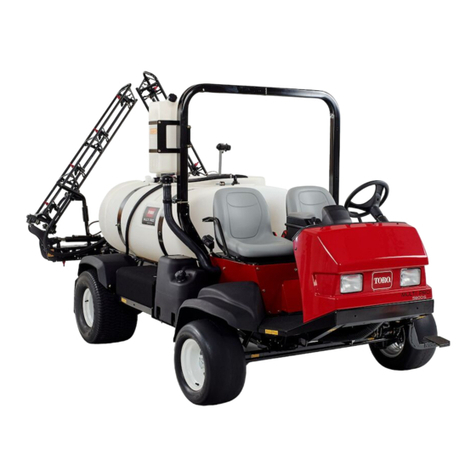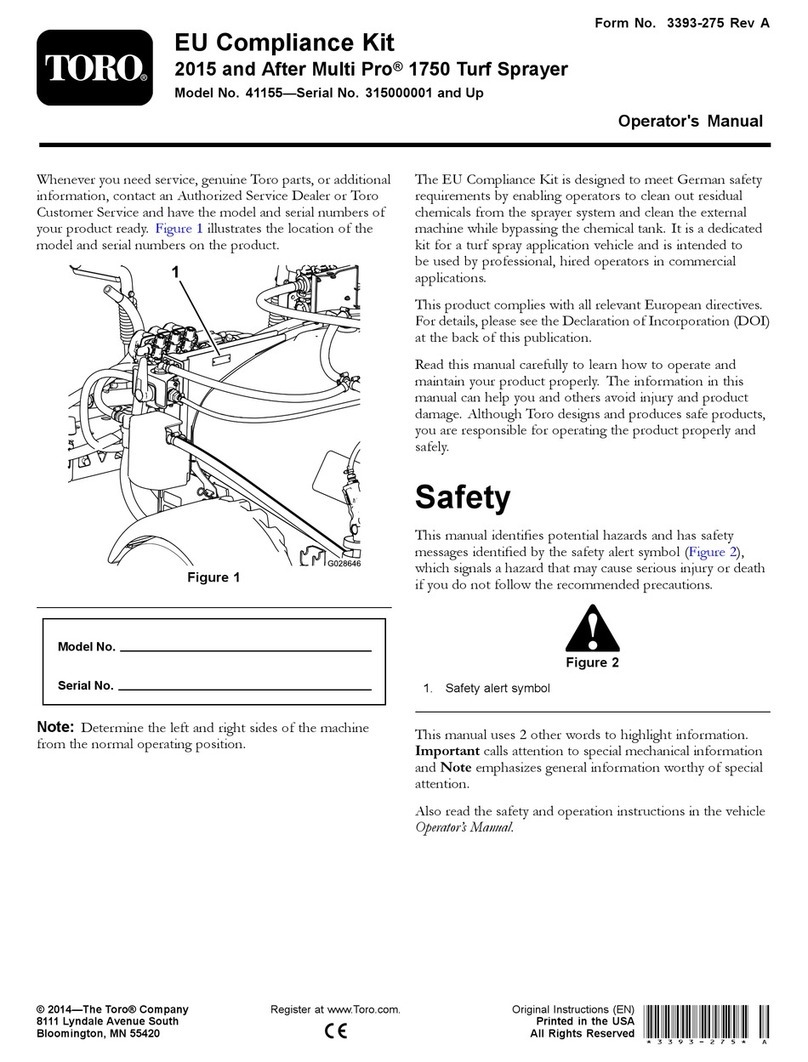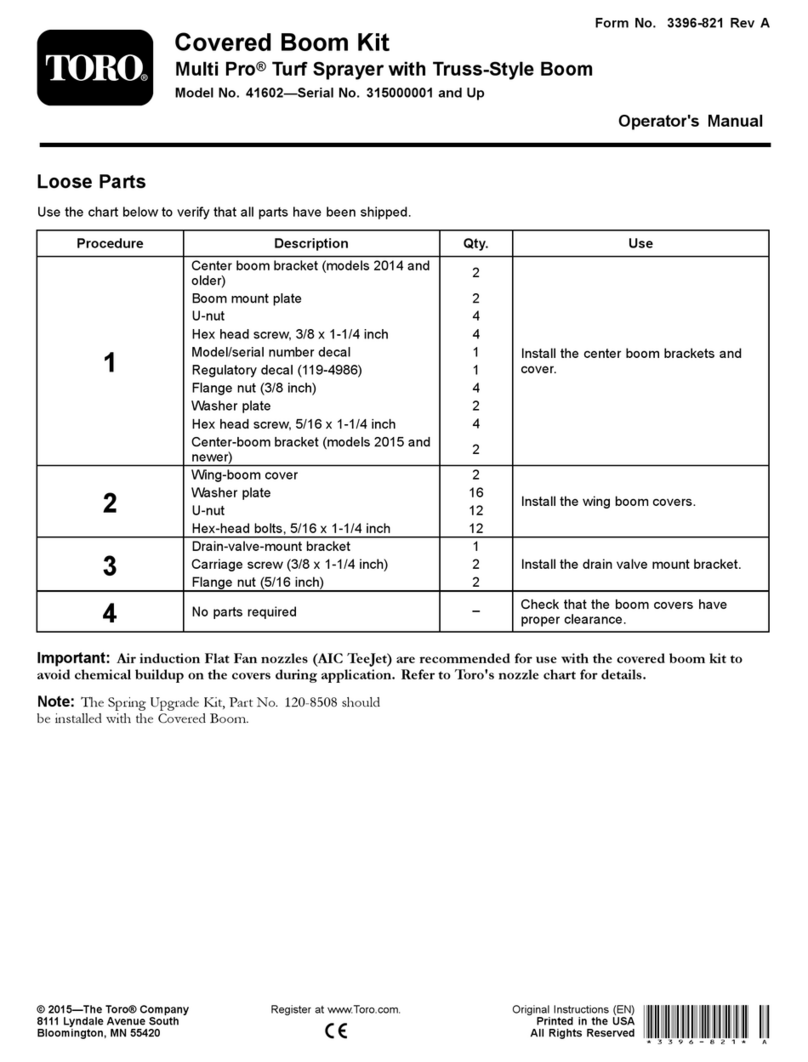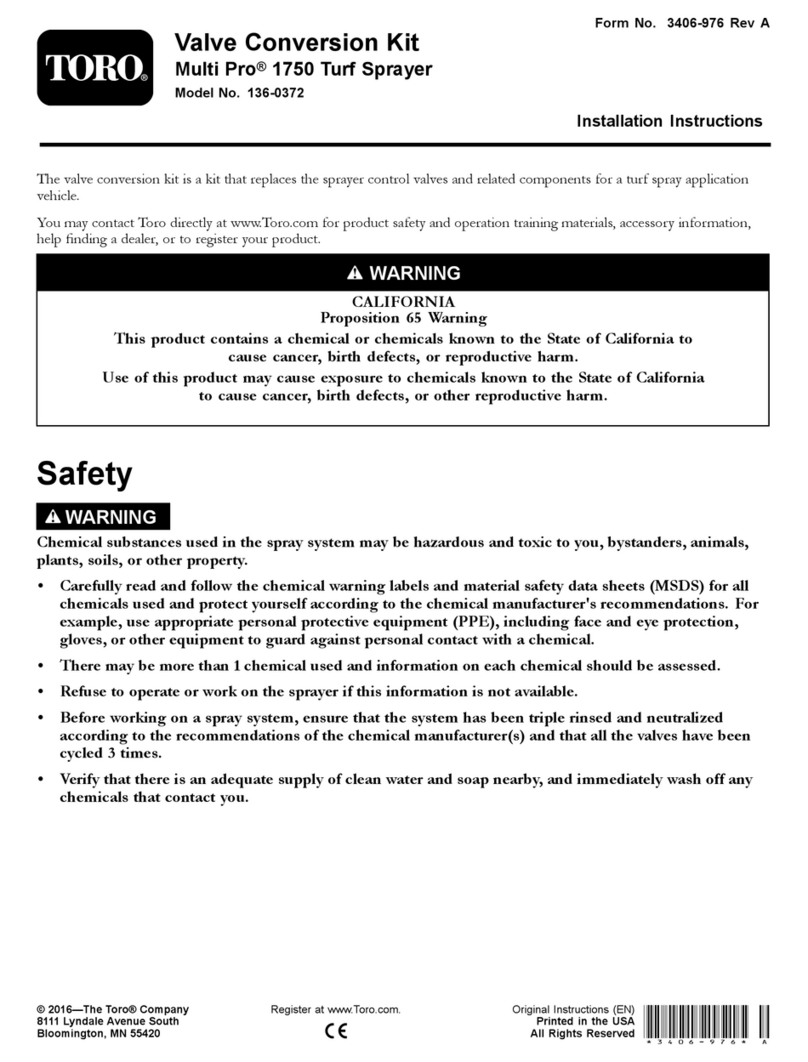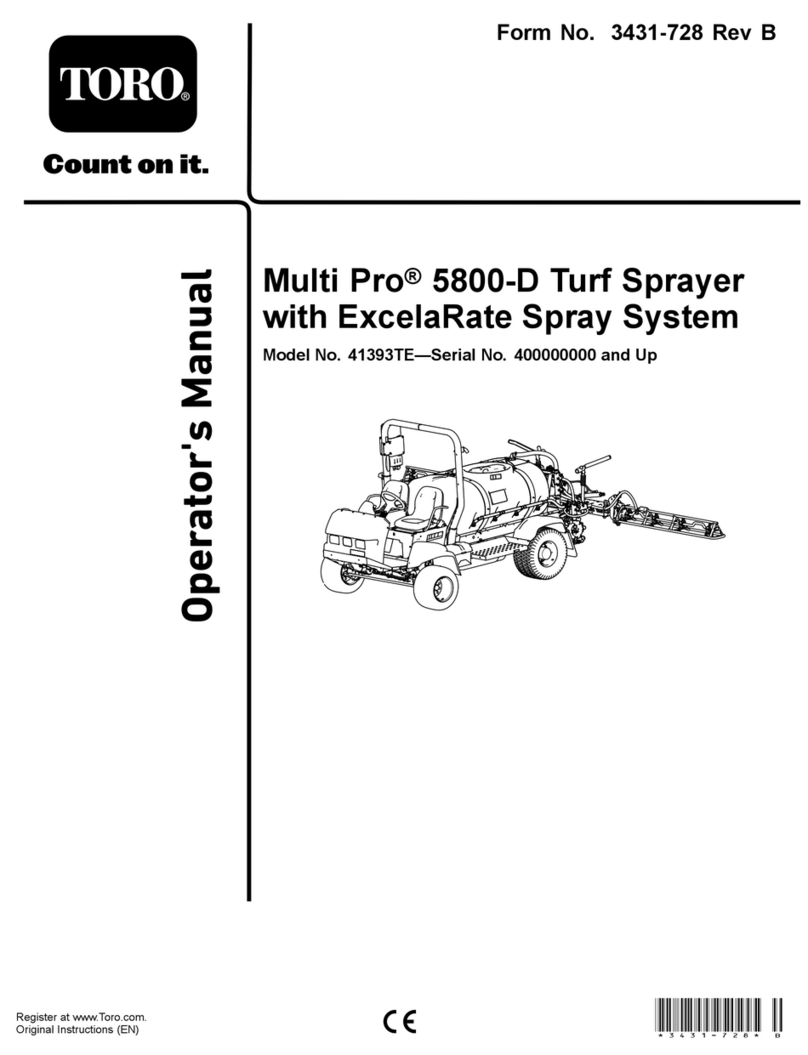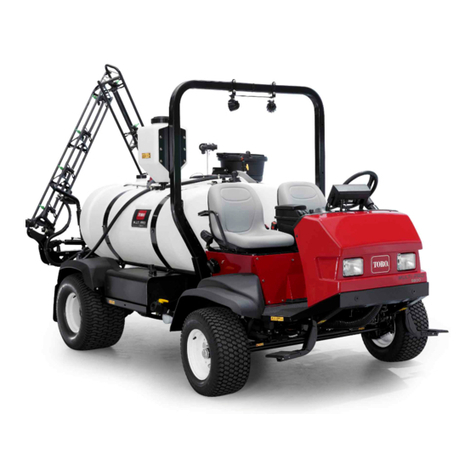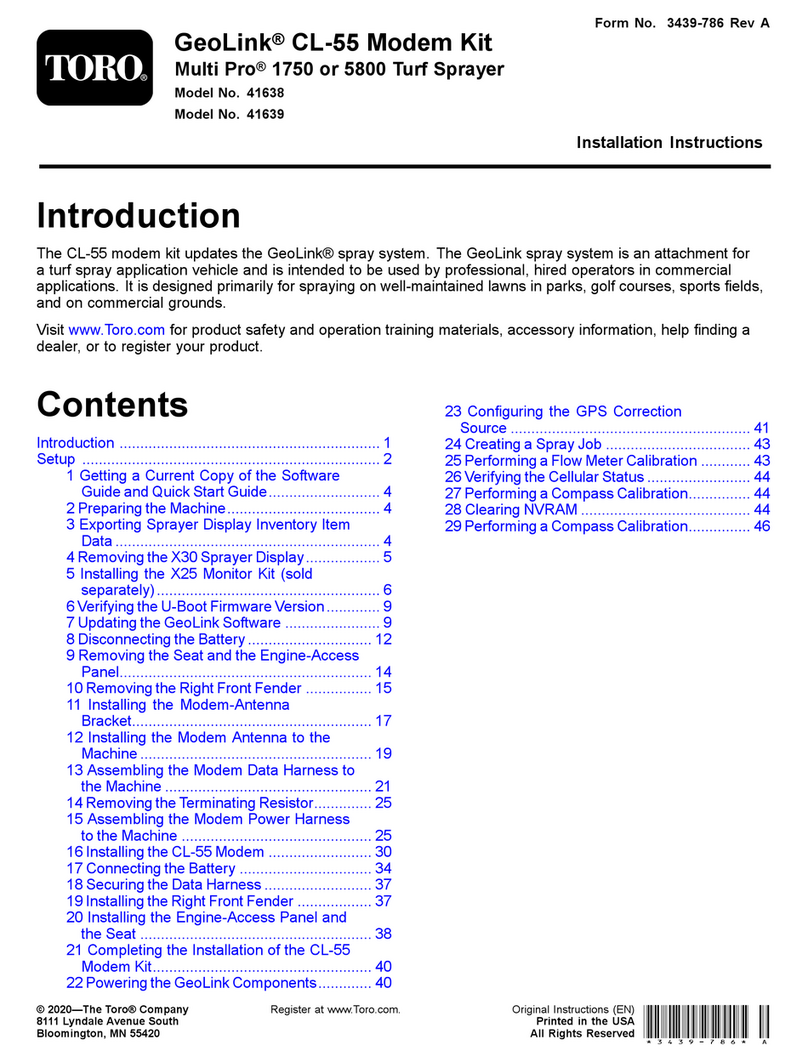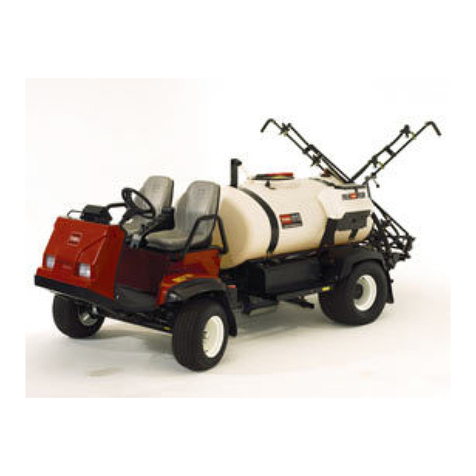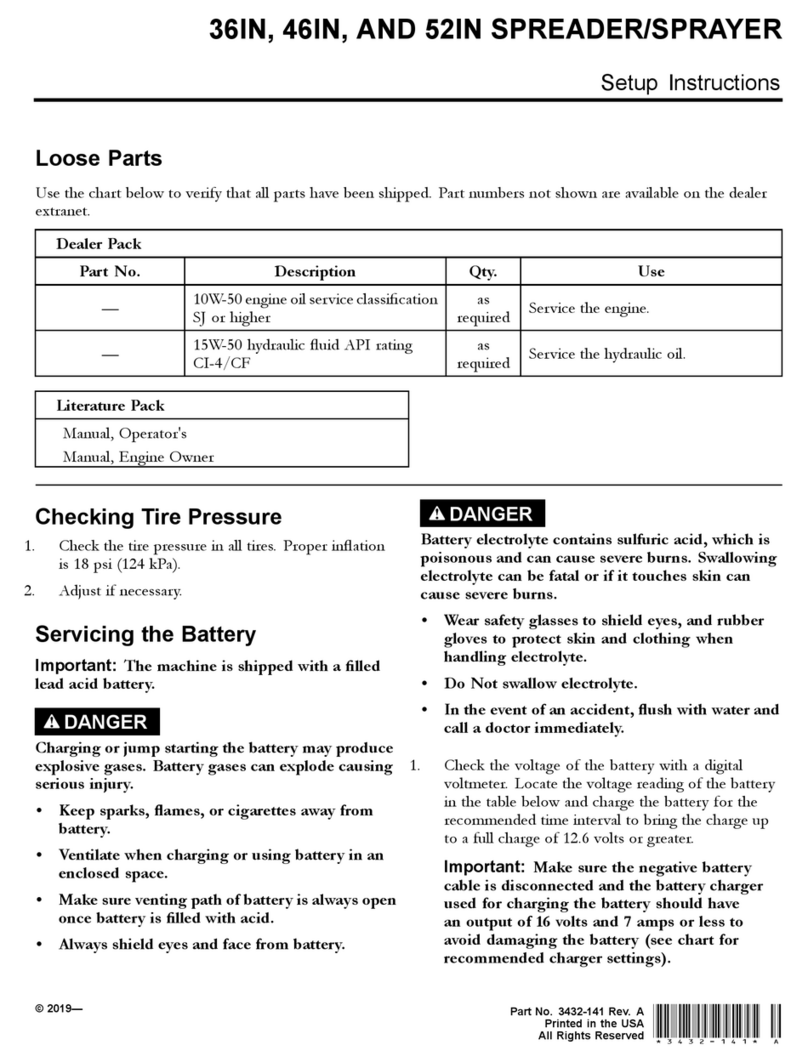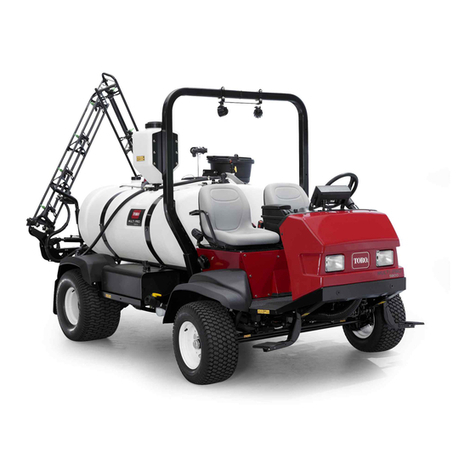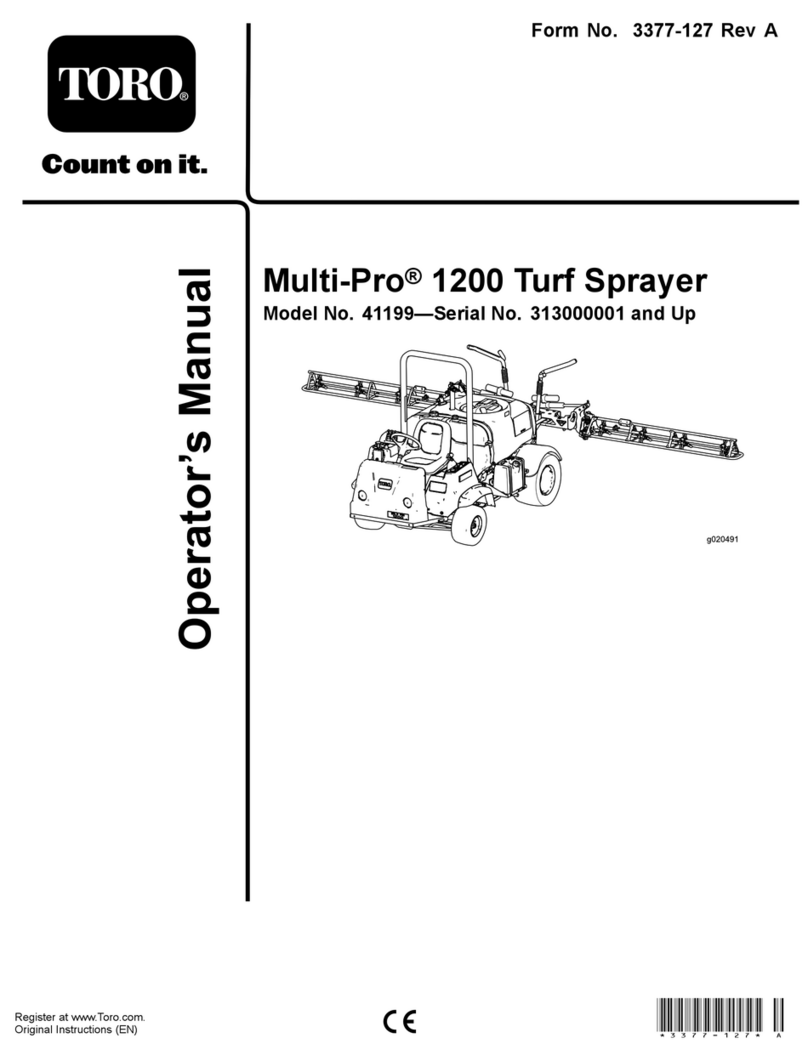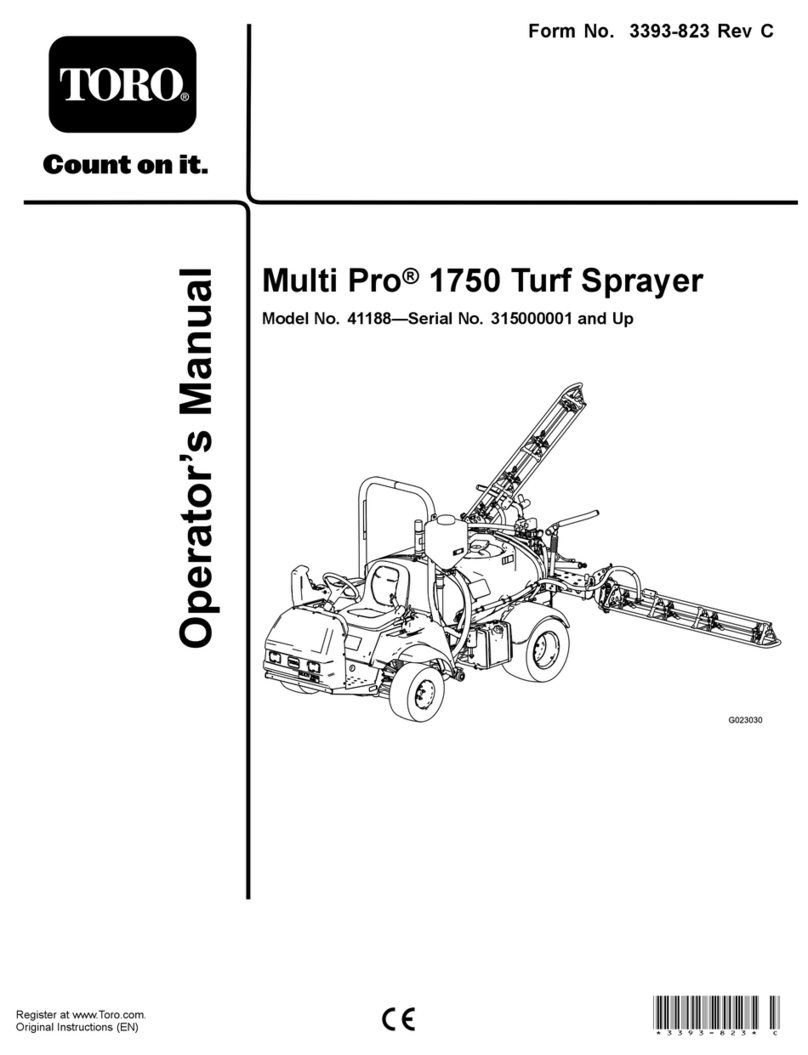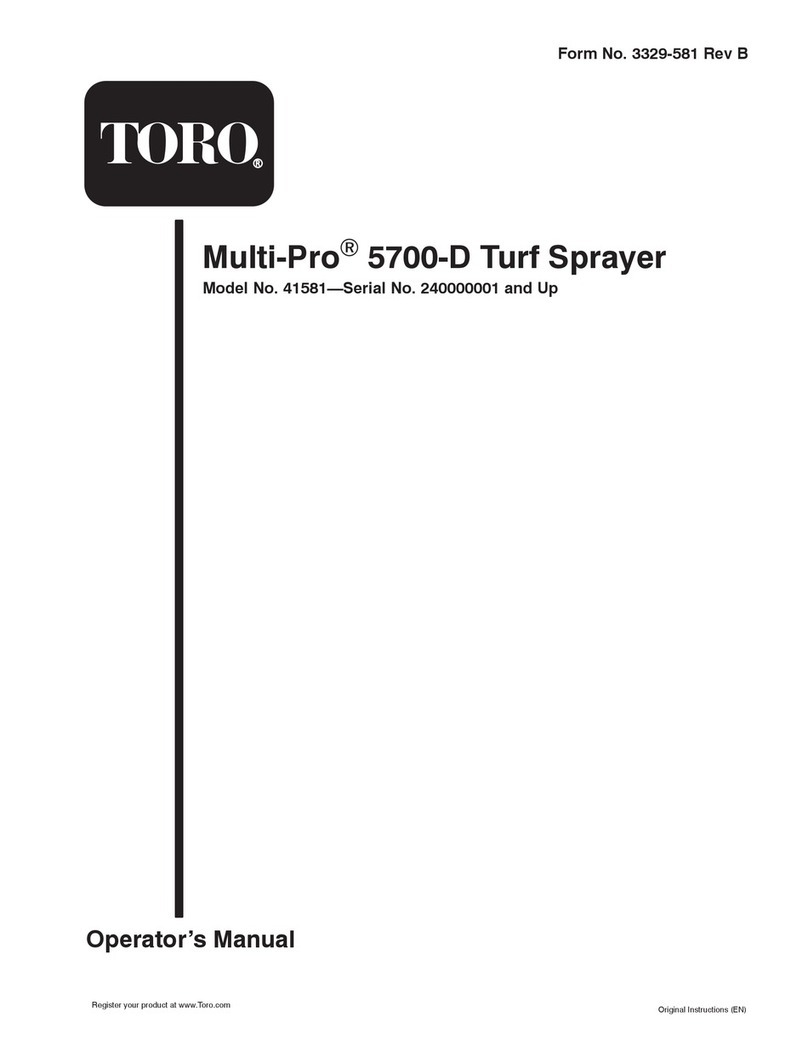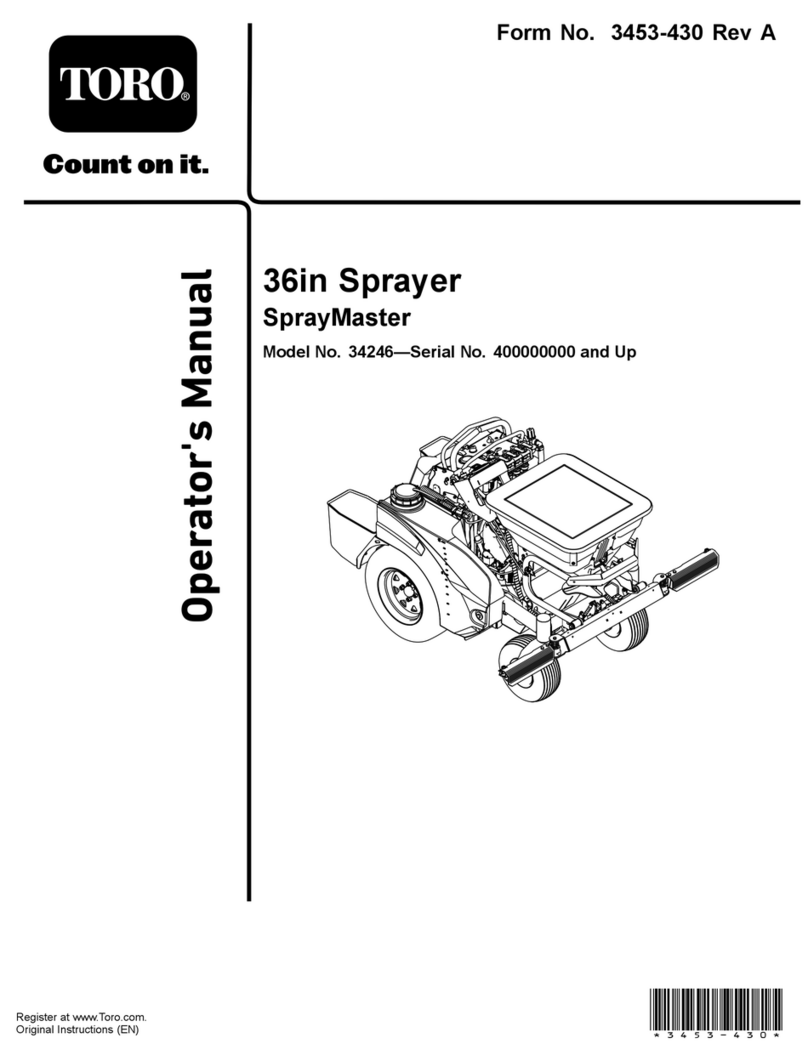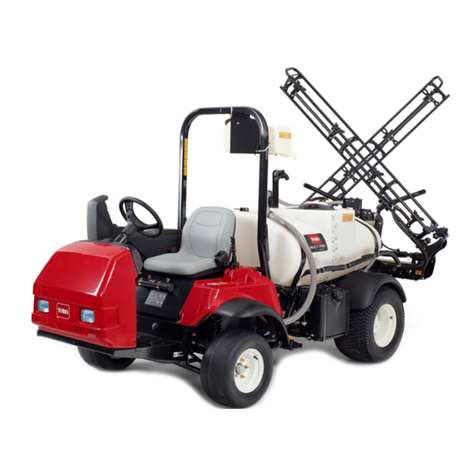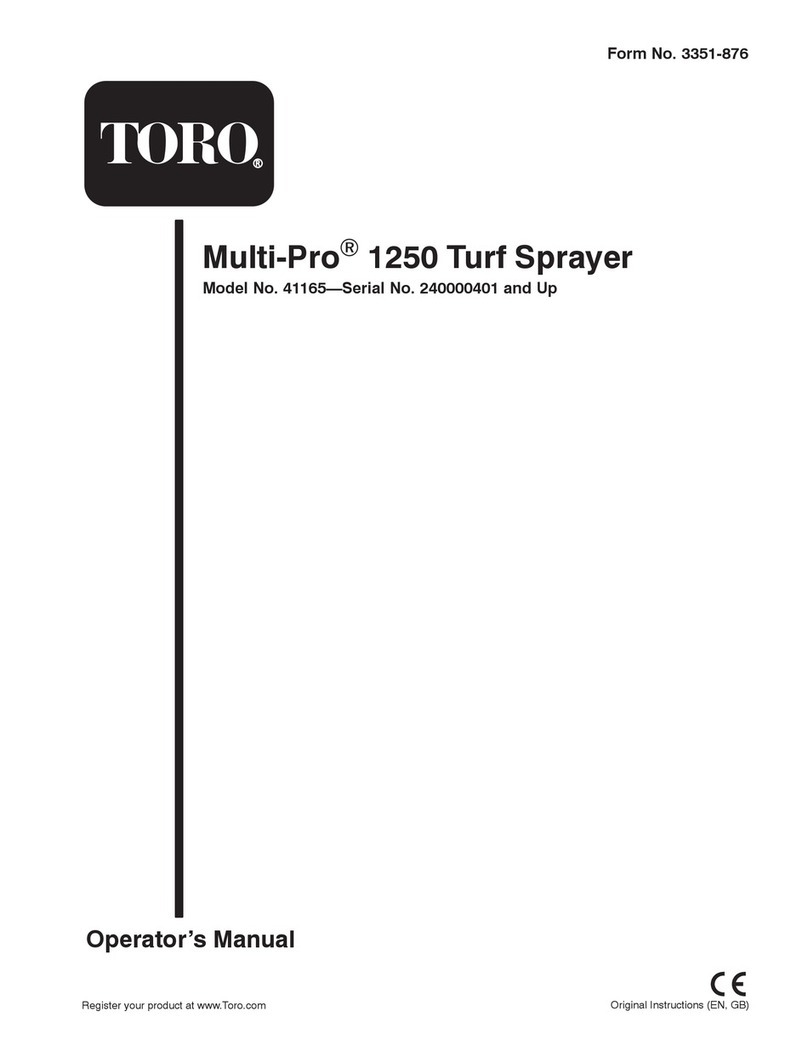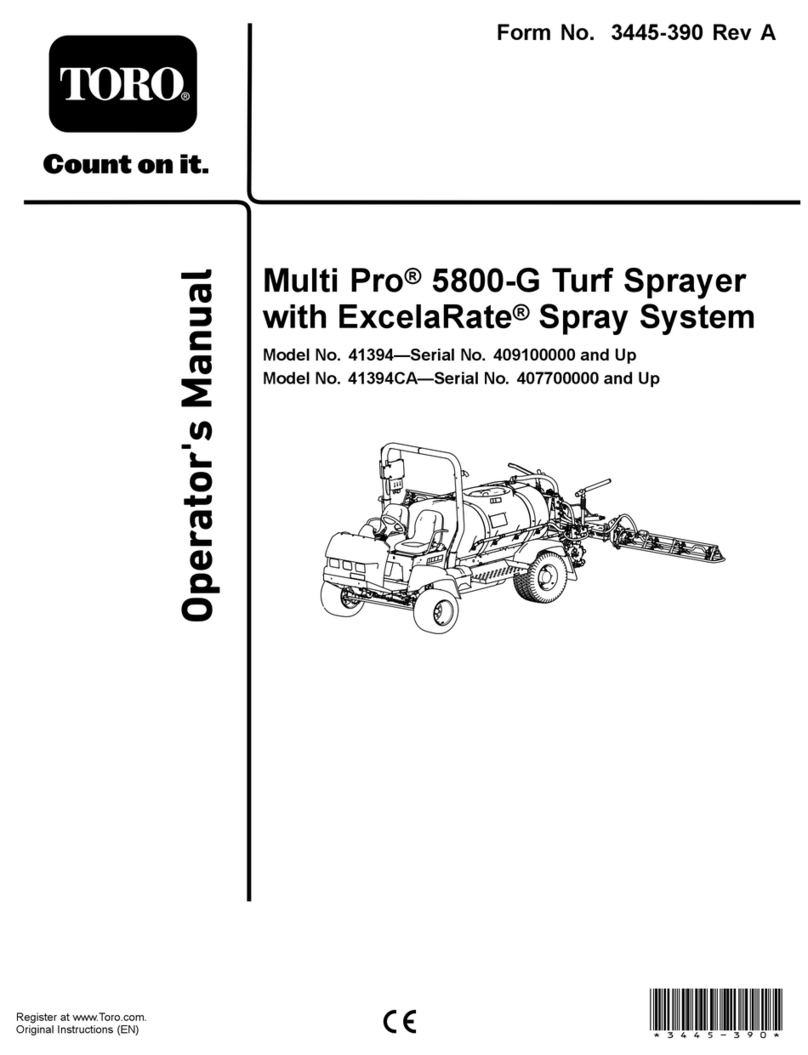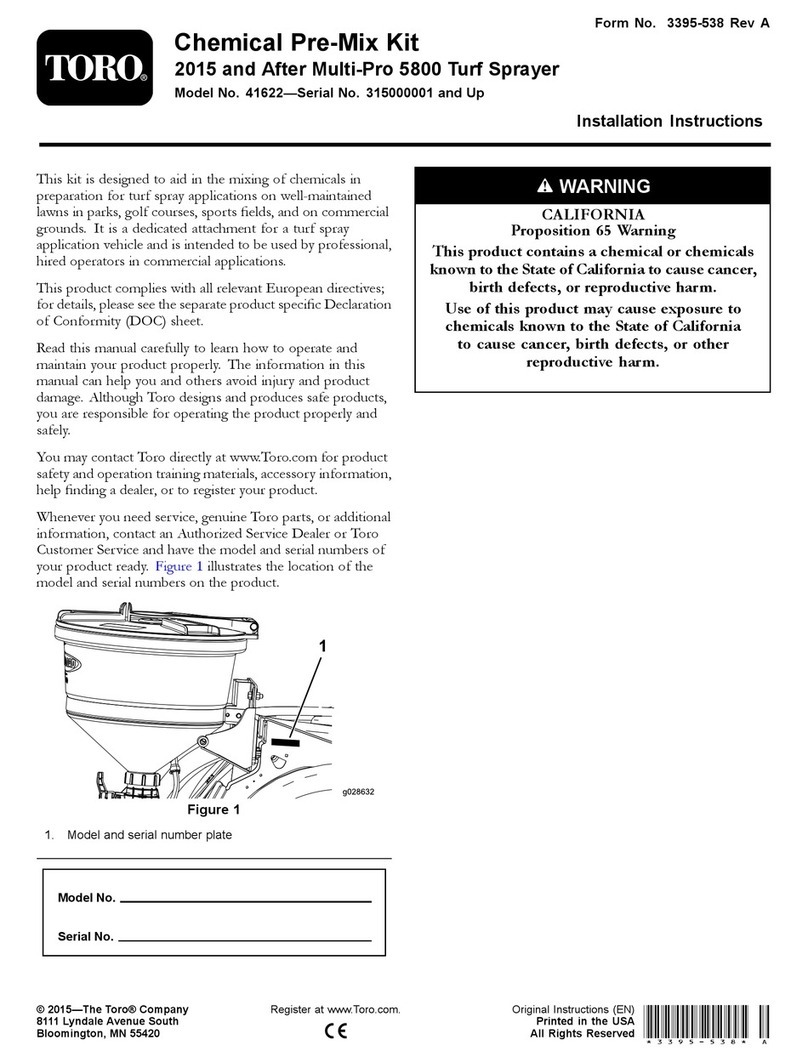
•F ailure to operate the spra yer safely ma y result
in an accident, tip o v er of the spra yer , and
serious injur y or death. Dri v e carefully . T o
prev ent tipping or loss of control:
– Use extreme caution, reduce speed, and
maintain a safe distance around sand traps ,
ditc hes , creeks , ramps , unfamiliar areas ,
or any areas that ha v e abr upt c hang es in
g round conditions or elev ation.
– W atc h for holes or other hidden hazards .
– Use extra caution when operating the
spra yer on w et surfaces , in adv erse w eather
conditions , at higher speeds , or with a
full load. Stopping time and distance will
increase with a full load.
– A v oid sudden stops and star ts . Do not
g o from rev erse to forw ard or forw ard to
rev erse without first coming to a complete
stop .
– Slo w do wn before tur ning . Do not attempt
shar p tur ns or abr upt maneuv ers or other
unsafe dri ving actions that ma y cause a loss
of spra yer control.
– Before bac king up , look to the rear and
ensure that no one is behind y ou. Bac k up
slo wly .
– W atc h out for traffic when y ou are near or
crossing roads . Alw a ys yield the right of
w a y to pedestrians and other v ehicles . T his
spra yer is not designed for use on streets or
highw a ys . Alw a ys signal y our tur ns or stop
early enough so that other people kno w
what y ou plan to do . Obey all traffic r ules
and regulations .
– T he electrical and exhaust systems of the
spra yer can produce sparks capable of
igniting explosi v e materials . Nev er operate
the spra yer in or near an area where there is
dust or fumes in the air whic h are explosi v e .
– If y ou are ev er unsure about safe operation,
stop w or k and ask y our super visor .
•Do not touc h the engine or m uffler while the
engine is r unning or soon after it has stopped.
T hese areas ma y be hot enough to cause bur ns .
•If the mac hine ev er vibrates abnor mally , stop
immediately , w ait for all motion to stop , and
inspect the spra yer for damag e . R e pair all
damag e before resuming operation.
•Before g etting off of the seat:
1. Stop the mo v ement of the mac hine .
2. Place the rang e selector in Neutral and set
the parking brak e .
3. T ur n the ignition k ey to Off .
4. R emo v e the ignition k ey .
Note: If the spra yer is stopped on an
incline , bloc k the wheels after g etting off
the spra yer .
Braking
•Slo w do wn before y ou approac h an obstacle .
T his gi v es y ou extra time to stop or tur n a w a y .
Hitting an obstacle can damag e the spra yer and
its contents . More impor tant, it can injure y ou.
•Gross V ehicle W eight (GVW) has a major
impact on y our ability to stop and/or tur n.
Hea vy loads and attac hments mak e a spra yer
harder to stop or tur n. T he hea vier the load,
the long er it tak es to stop .
•T urf and pa v ement are m uc h more slipper y
when they are w et. It can tak e 2 to 4 times
as long to stop on w et surfaces as on dr y
surfaces . If y ou dri v e through standing w ater
dee p enough to g et the brak es w et, they will
not w ork w ell until they are dr y . After dri ving
through w ater , y ou should test the brak es to
mak e sure they w ork properly . If they do not,
dri v e slo wly while putting light pressure on the
brak e pedal. T his will dr y the brak es out.
Operating on Hills and Rough Terrain
Operating the spra yer on a hill ma y cause tipping
or rolling of the spra yer , or the engine ma y stall
and y ou could lose headw a y on the hill. T his could
result in personal injur y .
•Do not accelerate quic kly or slam on the brak es
when bac king do wn a hill, especially with a
load.
•Nev er dri v e across a stee p hill; alw a ys dri v e
straight up or do wn or g o around the hill.
•If the engine stalls or y ou begin to lose headw a y
while climbing a hill, g radually apply the brak es
and slo wly bac k straight do wn the hill.
•T ur ning while tra v eling up or do wn hills can
be dang erous . If y ou ha v e to tur n while on a
hill, do it slo wly and cautiously . Nev er mak e
shar p or fast tur ns .
6

